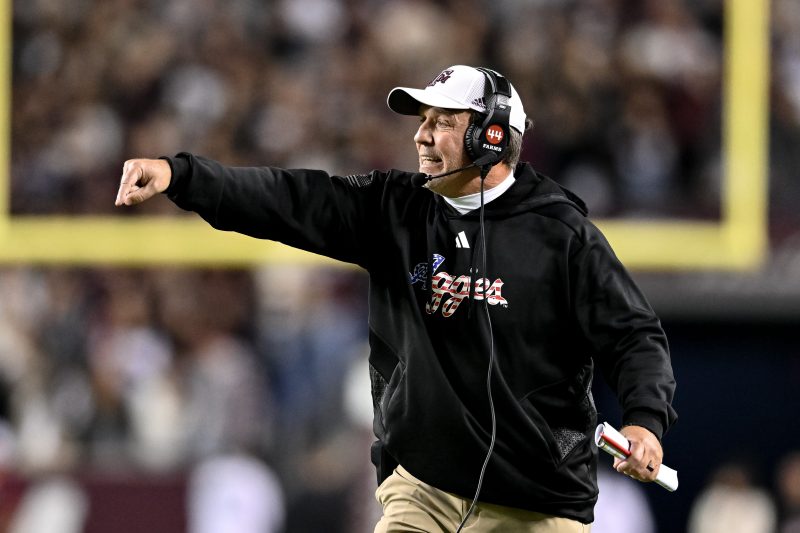
College athletes can’t be paid because adults can’t control spending
College sports is broken. And it isn’t the kids asking to be paid who broke it.
Texas A&M is going to pay Jimbo Fisher more than $77 million to go away after firing him Sunday. Throw in the money owed for bonuses he’s already earned, the payoffs for his assistants and the contract for the new coach, and the total price tag likely will be north of $100 million.
But sure. The greatest threat to college sports is athletes being allowed to profit off their name, image and likeness and the possibility courts or federal officials could deem them employees, which would require schools to pay them.
No one forced Texas A&M to give Fisher such a ludicrous contract, just as no one forced schools to upend traditional rivalries and geographical common sense with the recent realignments. This sordid mess that threatens the entire ecosystem is no one’s fault but the fine leaders of these colleges and universities, who lost both their sense of fiscal responsibility and grasp on reality long ago.
The arms race that paved the way both for Fisher’s obscene deal and the conference realignments stems from the fact schools get free labor from their athletes. You know, the people actually responsible for the product that drives the massive TV contracts and entices deep-pocketed boosters and alums to write those seven- and eight-figure checks.
Because they didn’t have to actually pay their athletes, schools realized they could plow all that excess cash into other things that would bring them more athletes, more attention and, thus, even more money. Like the football facility at Clemson that includes a golf simulator and a sand volleyball court. Or the locker room at Washington, which looks more like a club than an athletic facility with its purple LED lighting.
Then there are the ridiculous contracts that have made a head football or men’s basketball coach the highest-paid public employee in almost every state and often include even more outlandish buyout clauses. In the same week jaws were dropping over Fisher’s buyout, Kansas announced a new deal that will pay men’s basketball coach Bill Self a whopping $9.44 million this season.
It’s gotten to be like Monopoly money. And the more the schools spend, the more they need.
‘Let me be very clear in this next part: Texas A&M athletics and the 12th Man Foundation will be the sole sources of the necessary funds covering these transition costs,’ athletic director Ross Bjork said Sunday night. ‘We will use unrestricted contributions within the 12th Man Foundation for the first one-time payments, and the athletic department will fund the remaining payments for the remaining portion by growing our revenues and adjusting our annual operating budget accordingly.’
The operative words in that word jumble being, ‘the athletic department will fund the remaining payments for the remaining portion’ of Fisher’s buyout. Which means the athletic department will be on the hook for some $50 million of Fisher’s golden parachute.
Can’t pay those players, though!
Somewhere along the way, athletes realized the unfairness of these economics and began demanding a share of the largesse. Rather than find a workable solution, schools have fought them every step of the way. When that didn’t work, they went crying to Congress, asking politicians to save them from themselves.
‘During (recruiting) visits, discussions now emerge regarding how much a student-athlete can expect from NIL,’ Ohio State athletic director Gene Smith said in his written testimony for the House Committee on Small Business’ hearing on NIL earlier this fall.
Oh, the horror.
University administrators – and this isn’t only on the folks in the athletic department, mind you – have been spending with reckless abandon for more than a decade. Now that the financial reckoning is upon them, they want the rules changed to protect them from the consequences.
Their defense is schools simply don’t have the money to pay their athletes after they’ve splashed out on everything else. Because if the football and basketball players get paid, the golfers and gymnasts have to get paid, too. Yes, and the point is?
The money is there. Clearly. It’s not the fault of the athletes that the supposed adults in the room let the spending get out of control and have shown no interest whatsoever in trying to rein themselves in.
There is little question reform is needed in college athletics. But rather than going after athletes who are trying to get some of what is rightfully theirs, start with the people who spend as if money is no object and the bills are never going to come due.
Follow USA TODAY Sports columnist Nancy Armour on social media @nrarmour.
